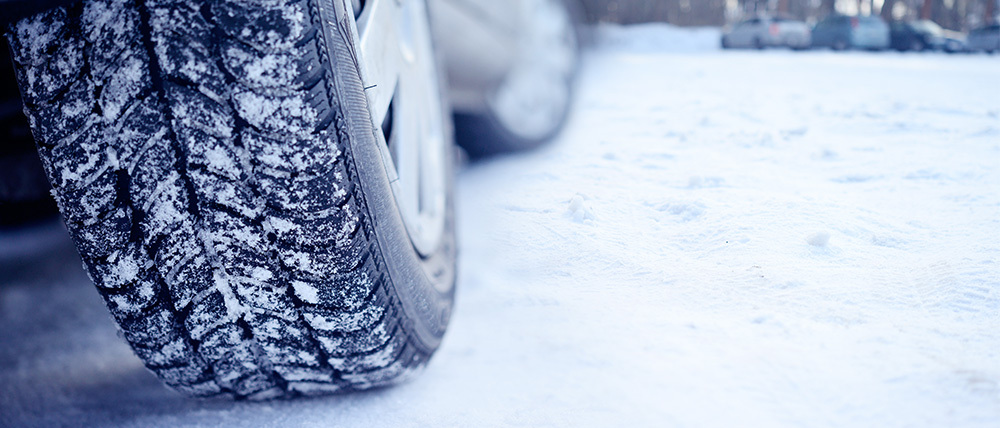As the days get chillier, it’s time to think about putting your summer frocks and shorts away and bringing out the cozy sweaters and coats. And, just as you change into your winter attire when the days get frosty, you also need to change your tire attire to prepare for the cold. Think of winter tires as your car’s winter wardrobe.

So, other than the goosebumps on your arms telling you it’s time to get a cold-weather strategy together, how do you know when it's the right time to swap out your summer tires or all-season tires until next year?
The simple rule of thumb is that if you can see your breath, it’s time to change those tires out. The Tire and Rubber Association of Canada recommends that as soon as it drops below 7 degrees Celsius you should put on the winter tires for better traction, braking, and handling.
Go all in
Some people are tempted to put only two cold-weather tires on and leave two of the all-season ones in place, but there are safety reasons as to why you shouldn’t give in to temptation. If winter tires are installed only on the front axle of your car, for instance, the grip is increased in the front and decreased in the back. People tend to oversteer in this situation, meaning you can lose control of the vehicle and spin out. Conversely, if the tires are put on the back only, it’s common to understeer due to a loss of traction, and the car can skid and keep going straight while you’re attempting to turn. It's best to go the distance and install all four winter tires at once.
Why they work
Winter tires are made of softer rubber compounds than regular, all-season ones. They are able, then, to keep their elasticity in cold weather, while all-season or summer tires, don’t. This means that they are better able to grip the road when it is cold and wet or snow-covered and icy.
Other than making sure to install four winter tires and not two, here are three other tips to keep you safe this winter season.
1) Don’t mix and match—While this may work for your winter wardrobe, it doesn't when it comes to your tires. Different tread patterns, tire size, and internal construction mean that you are treading on unsteady ground. Get a full pack of four when you're shopping for them.
2) Don’t wear it out—When your tires are threadbare or, in other words, are worn down to the tread-wear indicators, your traction and safety are reduced.
3) Pump it up—Proper air pressure extends tread life, improves safety in general and reduces fuel consumption. It’s a win-win-win. Consult your vehicle manual and tire manufacturer for the correct pressure to use.
Automotive specialists are trained to help you choose winter tires that are the best fit for you.
Find a location nearest you for all your autobody and collision repair needs at https://www.assuredauto.ca/locations.
